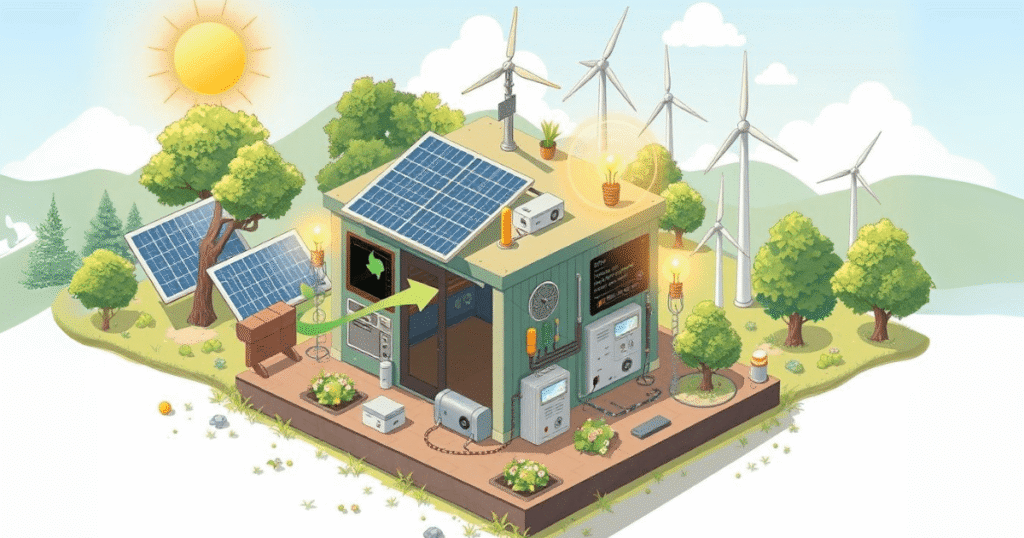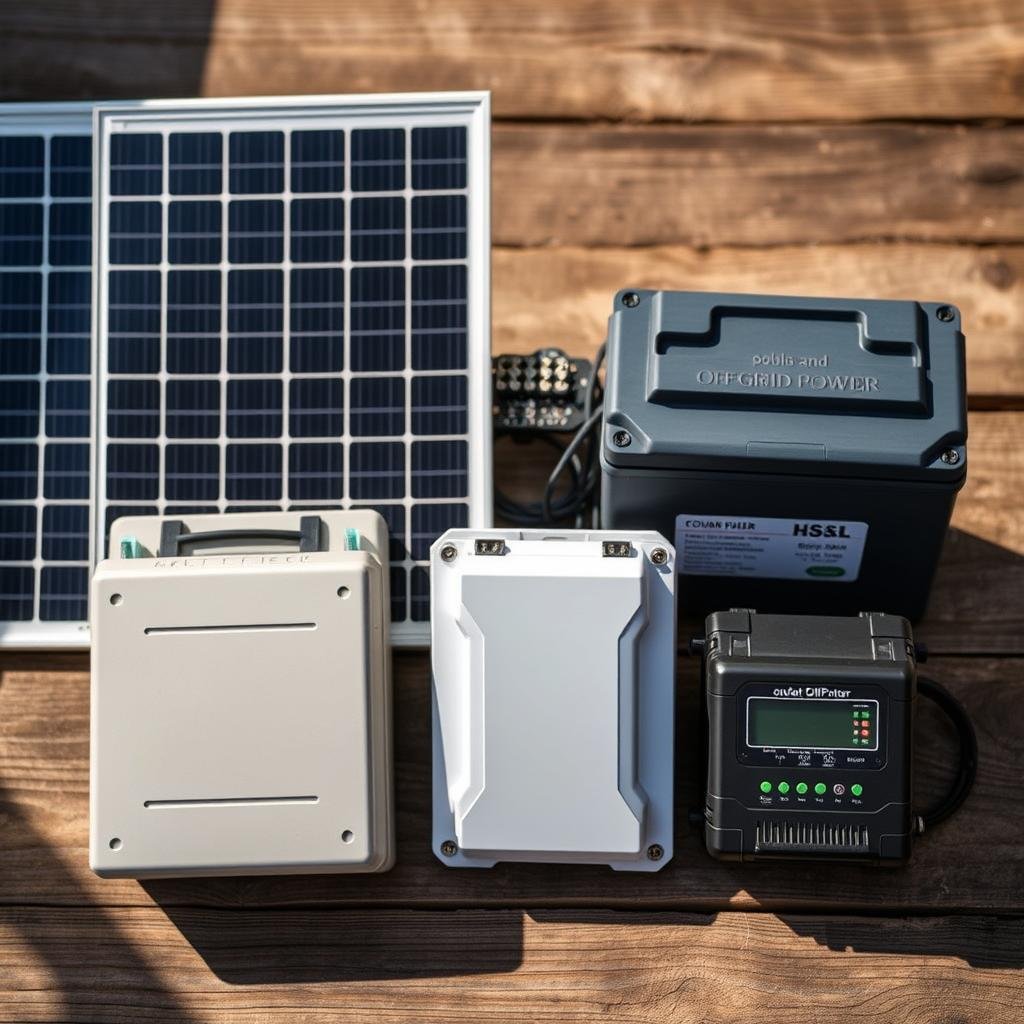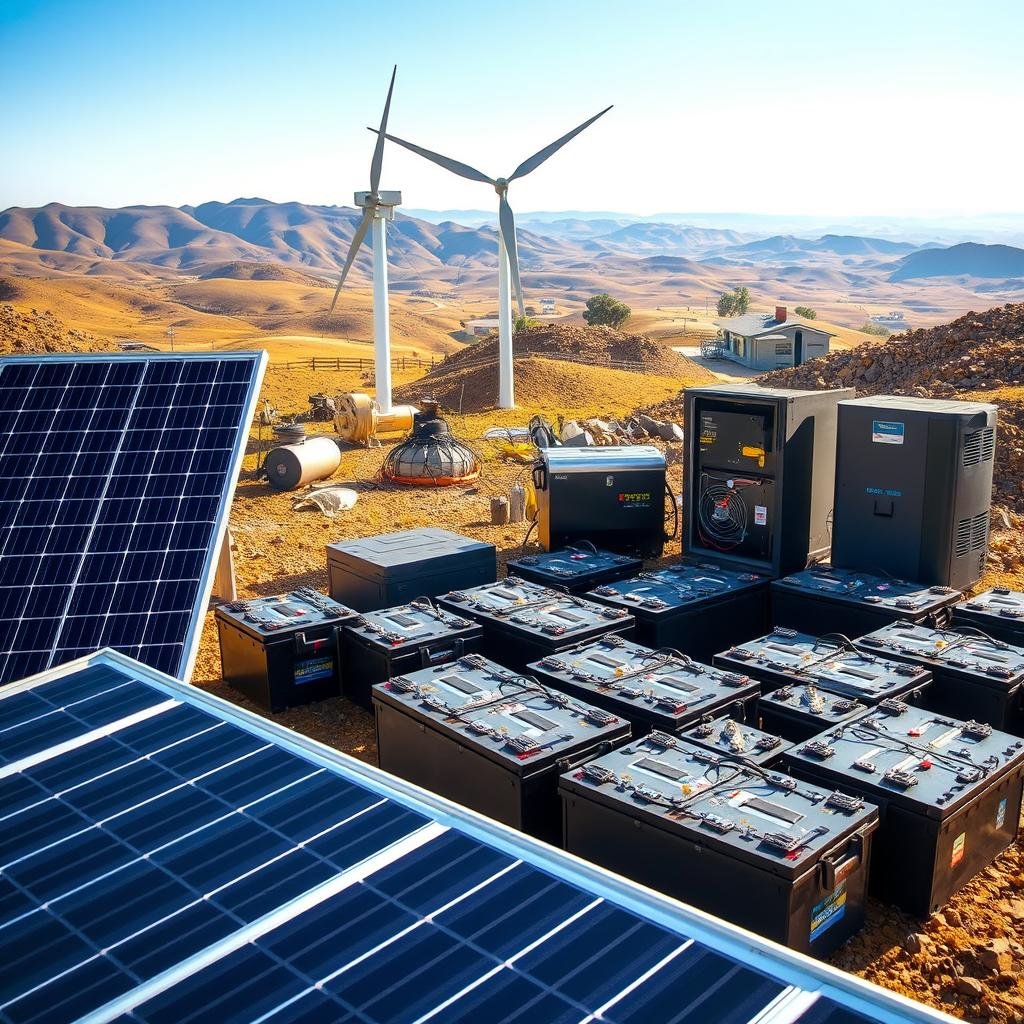How Does the Ultimate Off Grid Generator Work
Table of Contents
Imagine flipping a switch to power your home without relying on utility companies, solar arrays, or noisy fuel generators. This isn’t science fiction—it’s the promise of the Ultimate Off-Grid Generator.
This compact device redefines energy independence by producing electricity on demand, even when the sun isn’t shining or wind isn’t blowing. Let's have an insight into how does the Ultimate Off Grid Generator work ?
Traditional renewable systems require costly installations and ideal weather conditions. The Ultimate Off-Grid Generator skips these limitations.
Its innovative design uses simple components to create reliable power for homes, cabins, or RVs. No bulky panels. No diesel fumes. Just consistent energy that cuts monthly bills to zero.
Energy freedom starts with simplicity. Unlike complex solar setups, this system assembles in hours using everyday tools.
Once operational, it quietly generates electricity day and night. The technology combines efficient energy storage with smart power distribution, ensuring you never run out.
Key Takeaways
- Generates electricity without solar panels, wind turbines, or fuel
- Operates in any weather condition with minimal maintenance
- Reduces energy costs significantly through self-sufficient power production
- Compact design fits small spaces while powering essential appliances
- Uses renewable principles for sustainable, off-grid living
Off-Grid Power Solutions for Energy Independence
Energy freedom isn’t just a dream—it’s achievable with today’s technology.
Off-grid electricity lets you disconnect from public utilities while powering lights, appliances, and devices. This approach eliminates monthly bills and reduces environmental impact.
a. What Is Off-Grid Electricity and Why It Matters?
Off-grid systems create self-contained energy networks. They combine solar panels, wind turbines, batteries, and inverters to store and distribute power. Unlike grid-tied setups, these systems operate independently—no outages, no rate hikes.
Many assume off-grid living requires endless sunshine or constant maintenance. Modern solutions work in all conditions. Rainy days? No problem. Snowstorms? Still functional. You gain reliability without sacrificing convenience.
b. Key Benefits of the Ultimate Off-Grid Generator
This generator simplifies energy independence. It merges efficient storage with smart distribution, cutting costs by up to 100%. No complex wiring or permits needed. Just plug-and-play functionality.
| Feature | Traditional Systems | Ultimate Generator |
|---|---|---|
| Weather Reliance | High (needs sun/wind) | Zero |
| Installation Time | Days | Hours |
| Space Required | Roof or yard area | Compact (closet-sized) |
Assessing your needs ensures optimal performance. Calculate daily wattage for devices like refrigerators or laptops. Match this to your system’s capacity. The right choice keeps everything running smoothly, day or night.
How does the ultimate off grid generator work ?
Consistent power generation demands smart engineering. The system combines kinetic energy storage with photovoltaic tech, creating a loop that maintains output.
Solar panels charge high-capacity lithium batteries during daylight, while motion-based mechanisms kick in after sunset.
a. Breaking Down the Technology Behind the Generator
Three components form the backbone. Advanced panels capture sunlight 35% more efficiently than standard models.
A dual-phase inverter converts stored energy into usable electricity. The battery bank uses graphene-enhanced cells for faster charging and longer lifespan.
Energy flows through smart sensors that adjust output based on demand. If your fridge cycles on, the system prioritizes its needs. Lights dim? Power redirects to other appliances. This dynamic management prevents waste.
b. Integrate Modern Innovations with Traditional Methods
Old-school turbine principles meet cutting-edge materials. Copper coils in the generator reduce resistance by 60% compared to aluminum. Neodymium magnets boost magnetic field strength, squeezing more energy from each rotation.
Traditional setups lose 20% of stored power through heat dissipation. This design recaptures thermal energy using liquid cooling systems. The result? Up to 90% efficiency versus 70% in conventional models.
| Component | Standard Systems | Enhanced Design |
|---|---|---|
| Battery Cycle Life | 1,200 cycles | 3,500 cycles |
| Energy Loss | 25% | 8% |
| Recharge Time | 10 hours | 4.5 hours |
Designing and Maintaining Your Off-Grid Energy System
Creating a reliable power setup starts with smart planning. You need to balance daily electricity demands with your system's capabilities. This ensures lights stay on and devices function without interruption.
a. Assess Your Energy Needs and System Capacity
Begin by listing all appliances you'll use. Refrigerators consume 150-400 watts, while LED lights need 10 watts each. Add these numbers to calculate your daily watt-hour requirement.
Match this total to your battery storage and inverter capacity. Lithium batteries last longer than lead-acid models. Choose components that handle peak loads without straining.
b. Installation, Maintenance, and Safety Considerations
Position solar panels where they get maximum sunlight—avoid shaded areas. Secure all connections with weatherproof fittings. Ground your system to prevent electrical surges.
Clean panels monthly with a soft brush. Check battery terminals for corrosion every 3 months. Tighten loose wires to maintain efficient energy flow.
Always follow local building codes. Install smoke detectors near battery banks. Use surge protectors for sensitive electronics like laptops.
- Checkout My Home Doctor: A Must-Have Medical Guide for Every Household
Conclusion
Now that you know how does the ultimate off grid generator work do try to implement it in your energy consumption routine. Modern advancements make reliable, independent power more accessible than ever.
The right system eliminates dependence on weather-sensitive sources like solar panels while meeting daily energy needs efficiently.
By combining smart technology with practical design, these solutions deliver consistent electricity without complex installations or maintenance hassles.
Cost savings become immediate as monthly utility bills vanish. Unlike traditional generators requiring fuel or space-consuming setups, compact designs integrate seamlessly into homes. This choice empowers you to control energy use while reducing environmental impact.
Planning your setup starts with assessing capacity requirements and location specifics. Simple installation processes and durable components ensure long-term performance. Renewable principles guide every aspect, merging sustainability with real-world functionality.
Take the next step toward energy independence today. Explore systems that align with your household’s unique demands. A cleaner, self-reliant future begins with one intentional decision—yours.
FAQ
What makes an off-grid generator different from traditional grid-tied systems?
Unlike grid-tied systems, off-grid generators operate independently without relying on utility infrastructure. They combine solar panels, battery storage like Tesla Powerwall, and backup sources such as propane or diesel to provide self-sufficient power. This setup ensures energy access in remote areas or during outages.
Can solar panels alone power an entire home off-grid?
Solar panels are a primary energy source, but most homes require hybrid systems for reliability. Pairing panels with Goal Zero Yeti battery storage and backup generators like Honda EU2200i ensures consistent electricity during low sunlight or high demand. System capacity depends on location, weather, and daily usage.
How do battery storage systems improve off-grid efficiency?
Batteries such as Renogy Lithium-Ion store excess solar energy for nighttime or cloudy days. They balance supply and demand, reducing reliance on fuel-powered generators. Advanced models include monitoring tools to optimize charge cycles and extend lifespan, cutting long-term costs.
What size generator do I need for an off-grid cabin?
Generator size depends on your peak energy needs. Calculate wattage for appliances like refrigerators, lights, and tools. For example, a 3,000-watt Jackery Solar Generator suits small cabins, while larger homes may need 10,000-watt systems. Always include a 20% buffer for unexpected surges.
Are portable generators viable for long-term off-grid living?
Portable units like Champion Dual Fuel work for temporary use but lack the durability of permanent installations. For full-time setups, invest in solar arrays paired with Generac home standby generators. These offer automated operation, quieter performance, and higher fuel efficiency.
How often should I service my off-grid energy system?
Inspect solar panels quarterly for debris and check battery terminals monthly. Schedule professional maintenance for generators every 6–12 months, depending on usage. Lithium-ion batteries require less upkeep than lead-acid but still need annual capacity tests to ensure efficiency.
Can I integrate wind turbines with my existing solar setup?
Yes. Hybrid systems combining solar panels and Bergey Windpower turbines maximize energy production. Wind complements solar in cloudy or low-light regions. Use a charge controller to manage inputs and avoid overloading your battery bank. Local zoning laws may affect installation.




